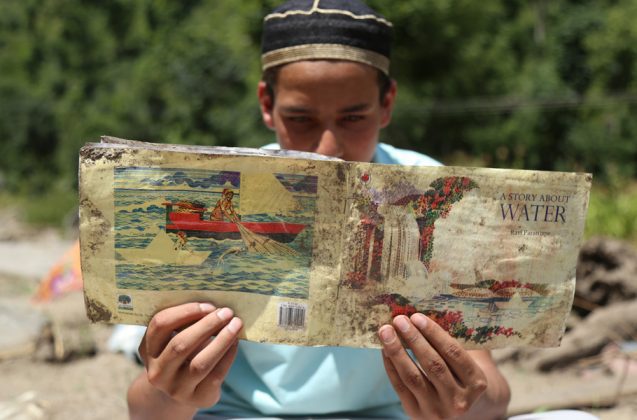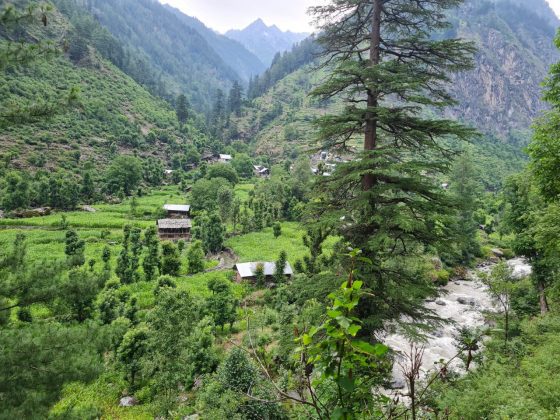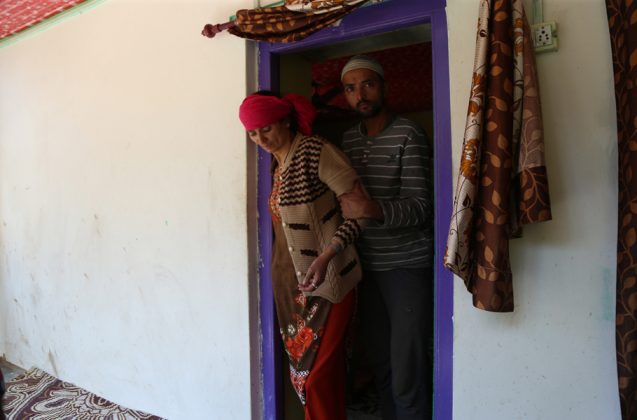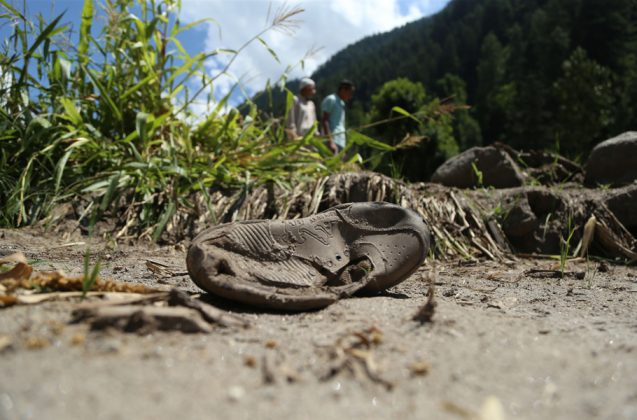
- Home
- India
- World
- Premium
- THE FEDERAL SPECIAL
- Analysis
- States
- Perspective
- Videos
- Sports
- Education
- Entertainment
- Elections
- Features
- Health
- Business
- Series
- In memoriam: Sheikh Mujibur Rahman
- Bishnoi's Men
- NEET TANGLE
- Economy Series
- Earth Day
- Kashmir’s Frozen Turbulence
- India@75
- The legend of Ramjanmabhoomi
- Liberalisation@30
- How to tame a dragon
- Celebrating biodiversity
- Farm Matters
- 50 days of solitude
- Bringing Migrants Home
- Budget 2020
- Jharkhand Votes
- The Federal Investigates
- The Federal Impact
- Vanishing Sand
- Gandhi @ 150
- Andhra Today
- Field report
- Operation Gulmarg
- Pandemic @1 Mn in India
- The Federal Year-End
- The Zero Year
- Science
- Brand studio
- Newsletter
- Elections 2024
- Events
- Home
- IndiaIndia
- World
- Analysis
- StatesStates
- PerspectivePerspective
- VideosVideos
- Sports
- Education
- Entertainment
- ElectionsElections
- Features
- Health
- BusinessBusiness
- Premium
- Loading...
Premium - Events

Kishtwar cloudburst: ‘If only there was mobile connectivity, could’ve saved lives’

A foul smell chases you the moment you set foot in the remote Honzar hamlet in Jammu and Kashmir’s Kishtwar district. Villagers say this terrible smell emanates from the rotting bodies and decaying carcasses buried under the mud and sludge following a cloudburst that hit the hilly region in July this year. In the deluge that could well be called the “worst disaster”...
A foul smell chases you the moment you set foot in the remote Honzar hamlet in Jammu and Kashmir’s Kishtwar district. Villagers say this terrible smell emanates from the rotting bodies and decaying carcasses buried under the mud and sludge following a cloudburst that hit the hilly region in July this year.
In the deluge that could well be called the “worst disaster” in Kishtwar’s history, 26 people lost their lives. So far, seven bodies have been recovered by the Jammu and Kashmir Police, the NDRF and other paramilitary forces while 19 people are still missing as per the police record.
According to a senior Jammu and Kashmir Police officer, among the 26 who lost their lives, 23 were local residents and three were Bakarwals (nomads). 19 others suffered injuries and were shifted to the district hospital in Kishtwar or the Government Medical Colleges in Srinagar and Jammu, depending on the kind of treatment they required. All the injured are stable now, a police officer said.
The ravage
The flash flood caused by the cloudburst in Honzar area has ruined 198 kanals and 9 marlas (around 25 acres) of agricultural land. Besides, flood waters have damaged 19 residential structures, 22 cowsheds and a middle school building.
The deluge has also left 33 families homeless. To help such families, the Jammu and Kashmir government has announced a financial aid of Rs 1,09,000 per family that would help them get a new roof over their head.
Honzar residents claim they wanted to retrieve the bodies of their dear ones to bury them as per Islamic rituals. “But we don’t have access to machines to move the huge boulders and look for the bodies,” one of the villagers tells The Federal.
Even taking an excavator or a JCB earthmover to Honzar is not possible since the area has no road connectivity. Honzar is around 57 km from the district headquarters and around 292 km from the winter capital Jammu. Dangduru is the last village north of Kishtwar that is connected by road. One has to cover a distance of nearly 17 km on foot from Dangduru to reach this beautiful village.

Akeel Hussain, 18, saw his mother Sharifa Begum (45) and 26-year-old brother Shakir swallowed by the flood waters. He believes their bodies might still be trapped under the boulders and sludge. “But even God cannot help us,” says a disillusioned Akeel, who lost his father Ghulam Rasool a few years ago.
His mother died while trying to save Shakir, who was stuck in a violently flowing Honzar nallah (stream) on the evening of July 27. The heavy rainfall had raised the water level. “I was offering namaz at the Jamia Masjid when I heard some noise outside. As I came out, I spotted my brother and mother trapped on either side of the swollen nallah,” Akeel recalls.
He could hear both his mother and brother screaming for help. “Mother was trying to reach out to my brother while he was screaming at her to move away and save herself. Within minutes both disappeared in the swirling waters.”
The administration has not been able to retrieve the bodies yet. According to Bashir Ahmed, naib tehsildar of Dachhan, even helicopters couldn’t be pressed into service to drop the JCBs and excavators since there is no helipad nor any proper road to the village.
“There was nothing we could say or do to console the villagers,” he rues.
The tragedy and rescue operation
On July 27, a cloudburst hit Maarav Radh area of Dacchan tehsil, some 2.5 km uphill from Honzar around 8.10 pm. As soon as the local police got information, a team rushed to the remote hamlet and reached there around 11 pm.
Vikram Parihar, the Jammu and Kashmir police inspector who led the rescue operation a day after the disaster, tells The Federal: “After the cloudburst, the flooded Honzar rivulet split into three channels. The first channel provided water to Kiarh nallah, second to Googet village and the third to Honzar nallah that meets Ananth nallah.”
The flood waters, he adds, caused heavy damage to the traditional flour mills and residential structures around Kiarh nallah and Googet village. “But the loss of lives was reported only from 2.5 km downhill of Honzar.”

“So, the very next morning, around 4:15 am, two police teams reached Honzar and started the rescue operation. That day, we recovered six bodies from the debris of the damaged residential structures and the cowsheds. Another body was found on the banks of Ananth nallah the next day,” Parihar says, adding that 19 people are still missing.
Later, the rescue teams also joined the local police in the search operation. While the NDRF camped in the village till August 13, the district police remained in Honzar till August 20, he added.
But what perhaps added to the damage most was the lack of mobile connectivity in the area, say villagers.
‘Lack of mobile connectivity’
According to eyewitnesses, when the cloudburst hit the Maarav Radh area, people panicked and this caused chaos all around.
The villagers say as they saw a huge wall of water and the debris rushing down the mountains, they screamed to alert the people living along the Kiarh nallah, and Googet and Honzar villages. “But our cries were overwhelmed by the roaring flood water,” says one of them.
They claim “had there been mobile and internet connectivity in their hamlet, they could have saved some lives” by alerting the people of Honzar in time.
“But our successive governments didn’t consider us humans and that’s the reason why they didn’t provide mobile connectivity to our people till date,” says 44-year-old Parvaiz Ahmed of Honzar village.
Pertinently, Sondar is the last village southwest of Honzar, where two major telecom companies—BSNL and Airtel—have installed their mobile towers. There is no mobile connectivity in Suid and Honzar villages in Dachhan block.
Rescue and relief disbursement
While Honzar residents are largely grateful for the relief and rescue efforts by the administration, local activists and rescue personnel, they blame revenue officials — patwari and naib tehsildar — of “indulging in corruption” and siphoning funds meant for ex-gratia and relief.
Nagina, 40, received severe head and leg injuries after she slipped into the swollen Honzar nallah and remained trapped in the flood water for more than 15 minutes on July 27. She fell into the nallah while she was looking for her missing son Saddam Hussain (22). Both Nagina and Saddam were rescued and later sent to hospital for treatment.

While Nagina has been paid the full compensation amount of Rs 50,000 as promised by the divisional administration for her treatment, her son has got only Rs 4,300 so far. “The revenue officials tasked with ex-gratia and relief disbursement are not paying the promised amount to the victims,” says his father Mohammad Jabbar.
The family members of 60-year-old Saja Begum, whose body has been recovered by the police, also alleged that they were paid only Rs 4 lakh ex-gratia even though they were promised a sum of Rs 5 lakh.
The patwari and naib tehsildar, the villagers allege, are also not providing them other assistance like tents, cement bags, ration, tin sheds, and LPG cylinders, sent by government departments and NGOs.
When asked, Bashir Ahmed, the naib tehsildar, refuted the allegations and instead claimed that the affected people have been paid full ex-gratia and other relief material.
“They (Saja Begum’s family) were paid the first installment of Rs 4 lakh from the SDRF funds and another installment of Rs 1 lakh from the lieutenant governor’s funds has also been paid,” he claims.
Reacting to the allegations of the villagers regarding the delay in the disbursement of relief material, he says, “Such allegations are baseless. Our teams have distributed everything that has been provided by the government among the deserving and needy people.”
Meanwhile, Honzar residents decried the J&K government’s decision to provide financial assistance only in cases where bodies have been recovered. Families whose kin are feared dead but still missing are kept out of the compensation ambit.
To this, Kishtwar DC Ashok Sharma says, “a missing person is declared dead only after a period of seven years as per rules”.


“But in the case of Honzar cloudburst victims, we’ve requested the Lieutenant Governor administration to relax the rules to benefit the grieving families. A decision in this regard is likely to be taken soon,” he adds.
When asked about children who have lost both their parents in the tragedy, he says: “There is just one such family. A girl from this family has been provided employment with the CVPP (Chenab Valley Power Projects).”
Flood, landslide risks loom large
While the district administration has declared the entire area around the Honzar nallah a “red zone”, people living close to the rivulet have been directed to construct their houses away from the water body. This is due to the looming risk of flood and the landslide in their village.
However, the flood-affected villagers, who have been putting up in government-provided tents or the houses of their relatives, claim they have lost all their income and belongings in the deluge and “cannot afford to construct new houses somewhere else with the meagre amount provided by the government”.
“Do you think a house could be constructed with Rs 1 lakh that’s being provided by the government? One cannot pass the harsh winters in the government tents either,” says a resident.
The administration, he adds, should be more reasonable and raise the amount earmarked for construction of new houses so that people could regroup as a community.






